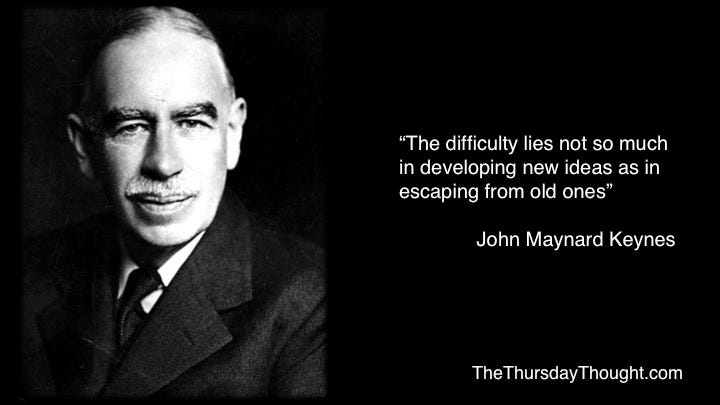
Imagine a Meatball Sundae. In a nice glass vase you have a base of freshly cooked meatballs. As a topping you have whipped cream, sprinkles, a few wafers and some jelly beans thrown in for good measure.
This mix is messy, disgusting and totally ineffective.
In a Meatball Sundae, the Meatballs represent basic products and the way these products used to be marketed with TV, Newspaper, Outdoor and other such one-to-many marketing techniques.
Then digital media or “new media” comes along and totally disrupts how the Meatball operates in today’s world.
The topping of the sundae represents digital or “new” marketing: social, display, video, search, content marketing, retargeting etc.
The problem with trying to use digital (new) marketing to sell Meatballs is that it does not work — anymore.
Most companies are still trying to fit the square peg of their Meatball into the round hole of today’s marketing mix and indeed todays world values.
This approach will always fail and lead to the disgusting mess that is the Meatball Sundae.
Re-Imagining the Meatball
Businesses can no longer sell products the way they always have. The old way, was make a product, then buy push advertising to push the product on people. This worked years ago when there were only several choices of media, all traditional one and the audience did not get to choose. This approach does not work by simply adopting new marketing techniques.
Today (In fact, for the past 10 years) businesses and organisations need to be re-imagined, re-engineered and re-calibrated. (As does their approach to marketing, in so many cases today the product or service is its own marketing if it is remarkable).
The challenge is that businesses have processes that do not work for the world as it has evolved today/yesterday and that the people who got companies to where they are today are not necessarily the people who will get them to where they need to be tomorrow. I say that with the utmost respect, the world has changed, businesses have changed and people have changed. So, businesses must be changed and people must also adapt or be changed also.
To make matters worse, those who experienced the good times of the economic boom are saddled with a sense of entitlement, when we live in a world of enablement.
Escaping old ideas and re-imagining new ones is the biggest challenge.

Innovation and the Meatball Sundae
In Episode one of The Innovation Show, I talk to Seth Godin and we discuss Meatball Sundae. It is almost 10 years since he wrote ‘Meatball Sundae’ and all the principles are still valid today.
Seth wrote the book specifically about digital marketing and business and the failure to adapt businesses to the new world. However, this failure to adapt is still widespread it is also the case for innovation.
There is a lot of “PR Innovation” in the world today. Businesses are highlighting they are now innovative with innovation titles rife amongst their staff and several innovation projects in progress.
However, there are only a few very brave companies who are really innovating. Real innovation (not invention) is about rebuilding companies while they are still in motion. (Much like the entrepreneur who jumps off a cliff and builds a plane on the way down).
True Innovation needs new teams, new mindsets and new practices.
I get that this is difficult, that this needs significant investment ahead of revenue, that this needs the CEO and board to re-imagine the business and thus the mission statement.
I also get that there is no choice for so many companies.
Be a Credit Maker not a Credit Taker
I have to admit, I had not walked a mile in the shoes of a CEO to understand their viewpoint.
The CEO is ultimately responsible for all successes and failures.
If a staff member takes risks and fails spectacularly, then it is the boss who looks bad to the board, not the staff member.
Instead of taking giant steps of innovation, what we need to do is take smaller initial steps. Then we need to take responsibility for failures and hand over successes to the boss. When you have done this a few times and the boss looks good, no-one will be monitoring you any more and you can make larger and larger bets. You will also find yourself with more budget to spend.
Seth Godin advises that Innovation can start small, that everyone can be a linchpin.
One suggestion is to start a “nerd club”. Start a book club, a group of like-minded individuals, who read books about marketing or business or even case studies and then discuss their findings once a week.
We discussed this a couple of weeks ago where a “watering hole” is a good place to start. Here you can bring your company together for brown bag lunches with external speakers, hold ideation sessions and hackathons.
This creates a positive vibe, a new energy and you benefit from the energy of the outside speakers (even better if they are startups, who you can hire).
Fake Forced-Fun Days

Back when I played professional rugby we used to do away days at the start of each season. These were typically adventure weekends, paintball sessions or even bowling. The cynical crowd we were, we used to call these forced fun days.
Little did I realise many years later, corporates do these all the time, unfortunately most of them are just to tick a box.
“Create a ripple, not a splash”
Now imagine that this money spent could be used to make real longer term change. Here you want tocreate a ripple, not a splash.
During these (fun days) weekends away there is a large amount of alcohol consumed, a large amount of money spent and a few heart to heart strategy meetings had (that are then not followed up).
Imagine instead this money (or some of it) was spent on implementing an ongoing innovation strategy. This can start small and include ideation sessions every week or a idea harvesting platform (like www.Playtank.net) or an innovation fund. For the latter it cannot be a case of simply awarding a lump sum to the top idea (some PR Innovation programmes would want that).
The better method is to whittle down all idea to a shortlist, include all entrants for the fund in this process. Then create mini-teams who have to prototype (using Saas tools, which offer 30 day trials or tools like Prototype on Paper) and present their ideas. Then you select not one winner but several and the bonus is you back a few ideas and not just one.
The result is a sincerely more energised workforce (those who participated), who will go back to their “Octopus Pots” as “Positive Vampires” and infect some others for the better. This is the Ripple you want to achieve.
Innovation is a ripple, it is ongoing improvement, where people do not even notice it happening.
The next time you run an innovation fund you will have more participants, more ideas and more energy and this will continue to ripple. Then the ripple will get stronger and innovation will become part of the culture. As an added bonus the “Octopus Pots” will dissolve.
Enterprise Hackathons
“You can get a man year worth of R&D out of one weekend”
Pete Dice is Technical Director with DCU Alpha and a guest on this weeks show. Pete told us that the beauty of enterprise hackathons is the bringing together of multidisciplines: tinkers, geeks and artists. The huge benefit is that the company can get a man year worth of R&D out of one weekend.
An alternative way to spend the “Forced Fun Day” fund is a hackathon.
The important thing here is to ensure that your organisation spends focussed time on a defined challenge or problem for the company. The old adage “Garbage in, Garbage out” is very relevant here as well as “Fail to prepare, prepare to fail.” The more the organisation defines the problems, the better they are able to pitch to the hackers for solutions.
Hackathons help focus your organisation and get everyone on the same page, when oftentimes they are not even in the same book. The hackathon can get everyone inside and outside the company focussing their energy in the same direction.
One key theme that keeps cropping up is that innovation cannot be pushed, it needs to be facilitated. Pete notices this with hackathons also.
(To experience a hackathon there is the BioPharma Ambition Hackathon — focussed on healthcare — from the 16th-18th September in DCU Alpha.)
Everyday a Fun Day

An Innovative Culture is where every day is becomes a fun day.
“You have to have a culture that is synonymous with innovation and facilitates making mistakes” — Andrew Jenkinson, vStream Group
vStream co-founders Andrew Jenkinson and Niall O’Driscoll told us how they foster an innovate culture. They give their team the framework to allow their abilities come to the fore. They give their team time to play and to experiment, this is where the magic comes from.
This approach is what many old-world minded managers would call random and while this old mindset should be acknowledged, but such management should not stop innovation happening.
In Summary
Start small, give the credit to the ones with the power, make them look good and build up some brownie points. The days of forced fun days are over and if not, they should be.
Companies need to create an innovation ripple and not a splash. This includes smaller, non-threatening initiatives. This involves funding competitions, ideation sessions, book clubs and speaker series.
Companies should embrace hackathons rather than weekends away which are a splash and a tick-the-box exercise.
Finally, The People who say it cannot be done should not interrupt those who are doing it.
You can also subscribe on iTunes and find us on Soundcloud. www.TheInnovationShow.io is alive and kicking or it should be anyway, if you spot any bugs please let me know on TheInnovationShow@gmail.com.
Episode One features:
- Seth Godin (On heretics and innovation, on Meatball Sundaes, on linchpins on raising kids and leading companies)
- Pete Dice (on Hackathons)
- vStream Group on their story and how to create a culture of innovation
Next Week:
- Senator Padraig O’Céidigh on life, leadership and founding Aer Arann
- Alexander Theuma on the warts and all of setting up a tech conference (SaaStock)
- Dr. Alison Campbell, Director tells us about Knowledge Transfer Ireland and how it can help founders and startups
- Steven Lock, CEO of Monford Ag, tells us about his company Grassometer
The Beautiful Colour Illustrations above are by the awesome Aaron Jasinski